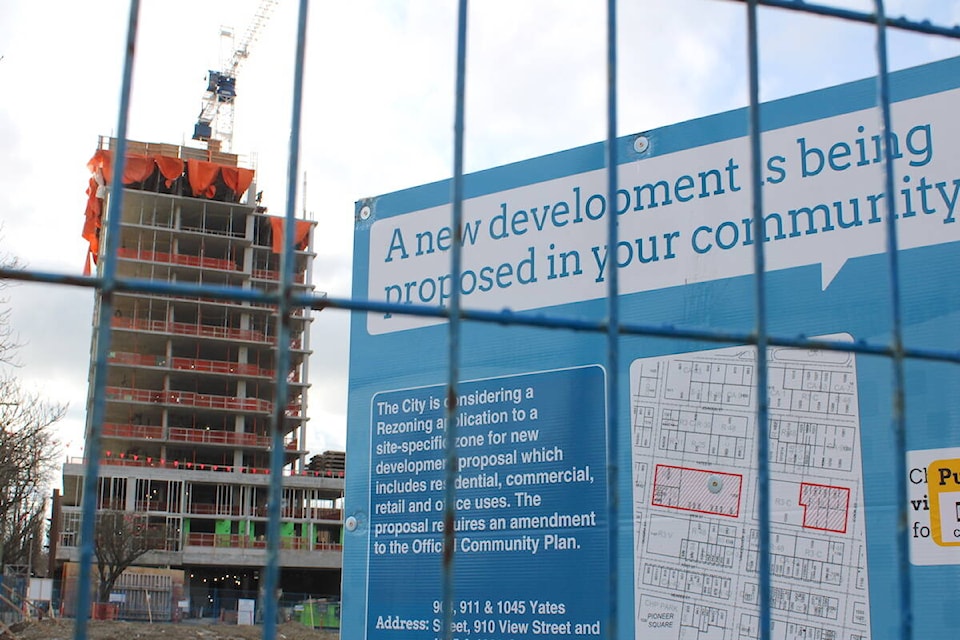Greater Victoria growing its rental stock last year helped the region’s vacancy rate rise slightly, but obstacles remain for low-income tenants, those who had to move and people needing larger units.
The rental market tightened nationwide due to surging demand in 2022, with Canada’s vacancy rate not seeing such a low level in more than two decades, according to Canada Mortgage and Housing Corporation’s 2023 rental market report.
Greater Victoria continued to have one of Canada’s lowest rental vacancy rates as it rose slightly to 1.5 per cent in 2022. Unlike 2021, the City of Victoria had a tighter vacancy rate than its surrounding communities as CMHC said demand returned to the urban core with the expansion of hybrid work.
The West Shore’s vacancy rate (1.5 per cent) jumped by just over one per cent last year, which was the South Island’s largest increase after most of the region’s purpose-built rental construction happened in those communities. However, those newly-built units were the costliest on average across Greater Victoria, which tamed demand on the West Shore.
As the average rent for purpose-built apartments increased by 7.7 per cent, which the report said was the fastest growth since 1991, 2022 was historically pricey for some incoming tenants. The CHMC said a new tenant moving into a two-bedroom apartment would be charged 33 per cent more a month than someone in an occupied unit in the same building.
The turnover rate in buildings built after 2005, which the CHMC notes are usually more expensive, was twice that of older apartments. The report said that contributed to the overall rise in rents, making residents less likely to move unless people were heading to more affordable communities up-Island.
The region added 1,411 rental units last year, which was more than two times 2021’s net increase.
“Record-high supply growth helped alleviate rental market tightness, while rising demand accelerated rent increases,” Pershing Sun, a local senior analyst with CHMC, said in the report.
The local market continued to be an issue for lower-income and larger households, with just one per cent of Greater Victoria’s units being affordable to renters with the lowest 20 per cent of incomes.
Spaces considered affordable to households making under $49,000 had just a 0.4 per cent vacancy rate in 2022 and made up a third of purpose-built rentals. The vacancy rate was 0.8 per cent for three-bedroom rentals that would be affordable for a family with an income of $75,000.
“The supply of affordable and suitable rental options is still not meeting demand,” the report stated.
Another factor upping demand was most of the 6,200 jobs the region added from January to October last year were part-time positions, whose workers are disproportionately renters.
Greater Victoria also saw a 12 per cent drop in the local rental townhouse supply, causing the vacancy rate of those three-bedroom units to go from 6.2 to 3.5 per cent.
READ: Greater Victoria housing prices rise in 2022 despite Canada seeing a decline
jake.romphf@blackpress.ca. Follow us on Instagram. Like us on Facebook and follow us on Twitter.
